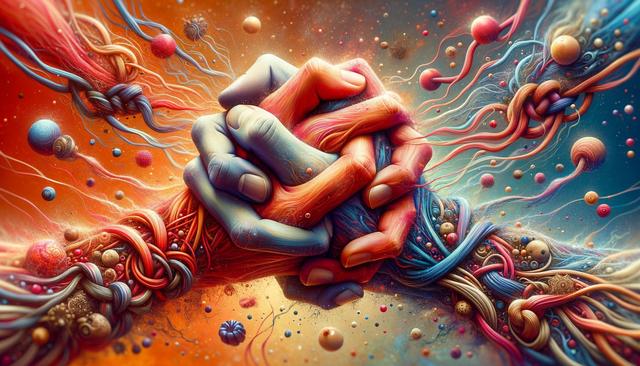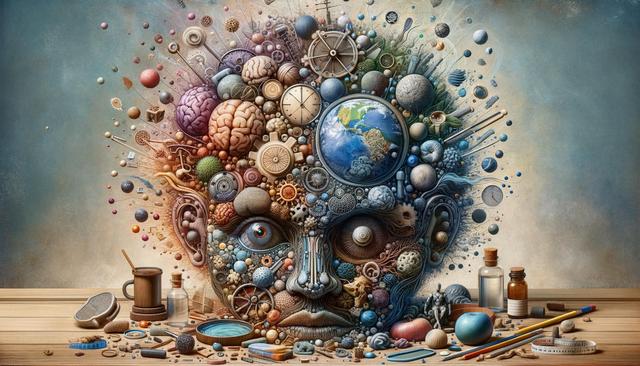
What Anxious Attachment Really Feels Like in a Relationship
Understanding Anxious Attachment in Relationships
Anxious attachment in relationships often stems from early bonding experiences, particularly with caregivers who were inconsistent or emotionally unavailable. These early interactions shape how individuals develop connection patterns in adulthood. When someone with an anxious-preoccupied attachment style enters a romantic relationship, their emotional wiring often interprets neutral or ambiguous behaviors as signs of rejection. This leads to heightened sensitivity, especially to perceived emotional distances. Understanding how this attachment style develops is crucial in recognizing the signs of anxious attachment style and beginning the journey toward healthier connections.
People with anxious attachment may seem highly invested or even clingy, but their behaviors are often protective mechanisms against deep-seated fears. They tend to feel hyper-alert to changes in mood, tone, or availability, fearing that any shift might lead to abandonment. This fear of abandonment in love can manifest as excessive texting, needing constant reassurance, or reacting strongly to minor issues. These are not signs of irrationality but rather of someone trying to protect themselves emotionally in ways they learned early on.
How Anxious Attachment Feels Emotionally
To someone experiencing it, how anxious attachment feels emotionally is a mix of vulnerability, longing, and instability. There’s often an internal tug-of-war between the desire for intimacy and the fear of losing it. Even in secure relationships, individuals may find themselves plagued by questions like, “Do they really love me?” or “Are they going to leave me?” These thoughts can be exhausting and lead to emotional burnout.
Common emotional responses include:
- Persistent worry about the partner’s feelings or commitment
- Overanalyzing texts, gestures, or tone of voice
- Feeling easily hurt by perceived slights or emotional distance
- Craving closeness while fearing rejection
These emotional triggers in anxious attachment are deeply rooted in the nervous system. When a partner seems distant—even if unintentionally—it can activate intense anxiety. The mind interprets it as a threat, leading to behaviors aimed at restoring closeness, even if those behaviors push the partner away. This emotional cycle can become difficult to break without awareness and intentional work.
Communication and Relationship Dynamics
One of the more challenging aspects of anxious-preoccupied attachment explained is how it affects communication. Individuals with this attachment style may struggle to express their needs directly, fearing they’ll be perceived as too needy or dramatic. As a result, they might resort to indirect communication or emotional outbursts, which can confuse or overwhelm their partners.
Relationship anxiety and attachment theory go hand in hand. Anxiety often arises not from what’s happening in the relationship, but from how one interprets those events. For instance, a delayed response to a message might be seen as disinterest or rejection, rather than simply being busy. This misinterpretation can lead to repeated cycles of reassurance-seeking and frustration.
Insecure attachment patterns in adults can strain even otherwise healthy relationships. Communication becomes reactive rather than responsive, and conflicts often escalate quickly. To support smoother interactions, it helps when both partners understand the patterns at play and work together to create a safe emotional environment. This includes setting clear boundaries, offering reassurance, and encouraging open dialogue.
Recognizing the Patterns and Triggers
Recognizing the signs of anxious attachment style is an important step toward emotional growth. Many people go years without understanding why they feel so unsettled in relationships, often blaming themselves or their partners. However, identifying patterns can bring clarity and compassion into the healing process.
Some common triggers include:
- Changes in communication frequency or tone
- Physical or emotional withdrawal from a partner
- Perceived lack of appreciation or attention
- Uncertainty about the status of the relationship
These triggers are not always rational, but they are real to the person experiencing them. Learning to pause and reflect before reacting can help break the cycle of anxious responses. Journaling, therapy, and mindfulness practices can all assist in building emotional awareness and resilience.
Additionally, understanding your emotional triggers in anxious attachment allows you to communicate them clearly to your partner. This not only reduces misunderstandings but also fosters empathy and connection. Relationships thrive when both partners feel seen, heard, and supported—regardless of their attachment style.
How to Heal Anxious Attachment
Healing takes time, but it is possible. The first step in how to heal anxious attachment is cultivating self-awareness. This means becoming mindful of your emotional patterns and the ways you react in relationships. Therapy—particularly approaches that focus on attachment and relational patterns—can be incredibly helpful in this journey.
Some supportive strategies include:
- Practicing self-compassion and challenging negative self-talk
- Building a secure base through friendships, hobbies, and self-care
- Setting realistic expectations for partners and for the relationship
- Learning to self-soothe during moments of anxiety or insecurity
Partners can also play a meaningful role in the healing process. When someone with an anxious attachment style feels consistently supported and valued, they begin to develop more secure ways of relating. However, the responsibility for healing ultimately lies within the individual. Developing emotional regulation skills and working on self-worth are essential parts of forming healthier connections.
Over time, with effort and support, the grip of anxious attachment can loosen. Relationships can become less about fear and more about mutual respect, trust, and emotional intimacy.
Conclusion: Moving Toward Secure Connection
For those experiencing anxious attachment in relationships, the emotional landscape can often feel overwhelming. But understanding the roots of this attachment style, along with recognizing the signs and patterns, makes a significant difference. When individuals acknowledge how anxious attachment affects communication and learn to manage their emotional responses, they open the door to more fulfilling and balanced relationships.
Embracing the journey of healing is not only about changing how you relate to others, but also how you connect with yourself. With self-awareness, supportive relationships, and possibly therapeutic guidance, it becomes entirely possible to move from insecure attachment patterns in adults toward stronger, more secure bonds built on trust and understanding.


